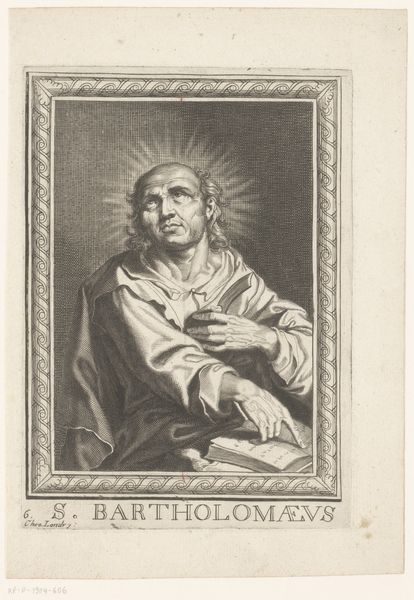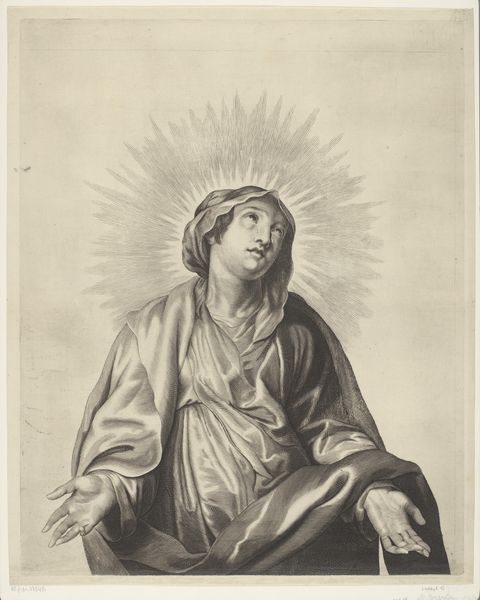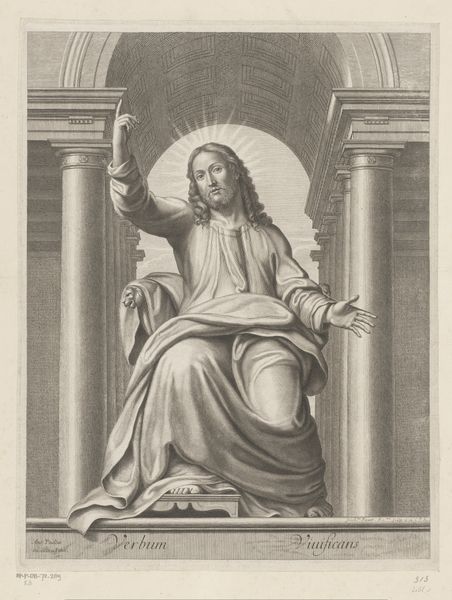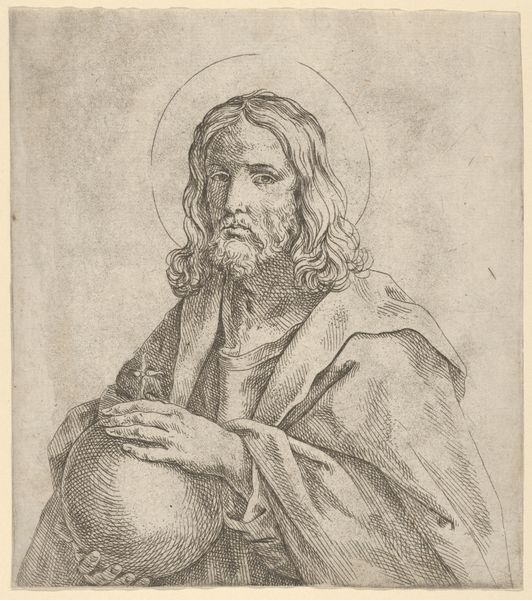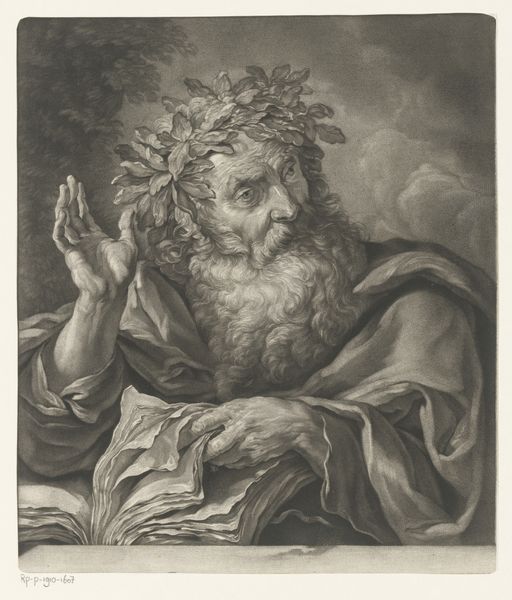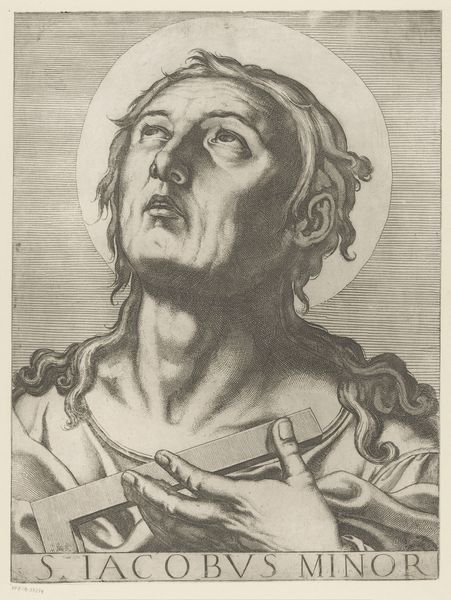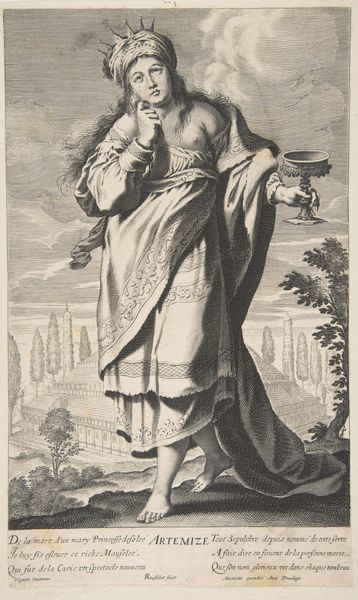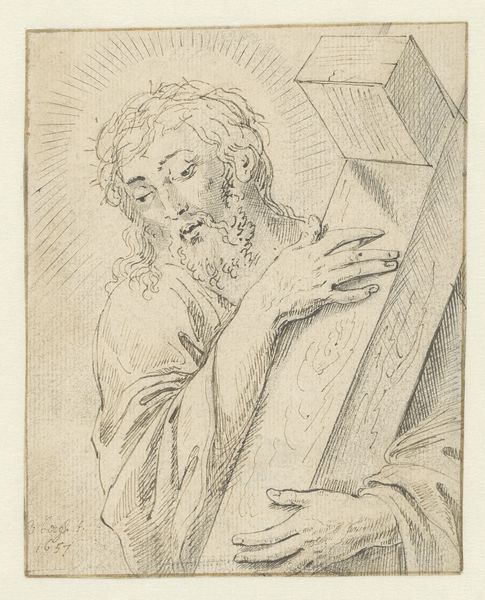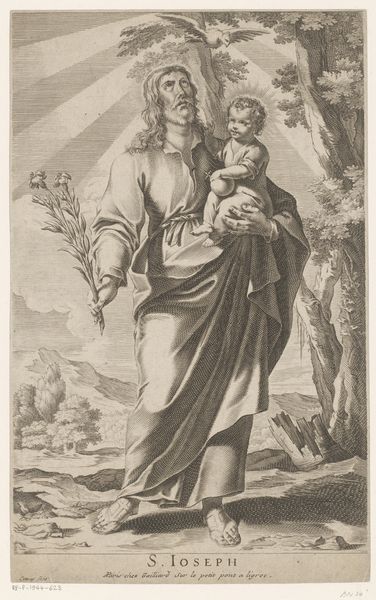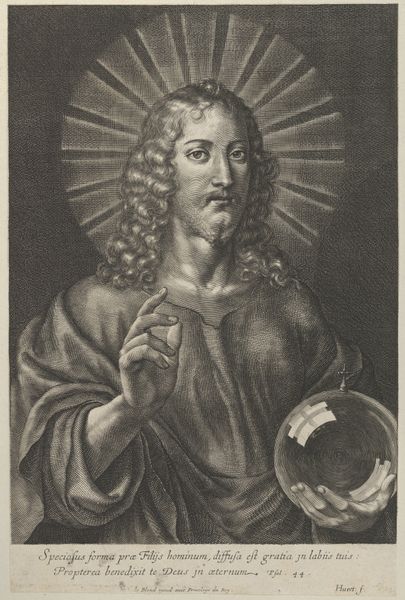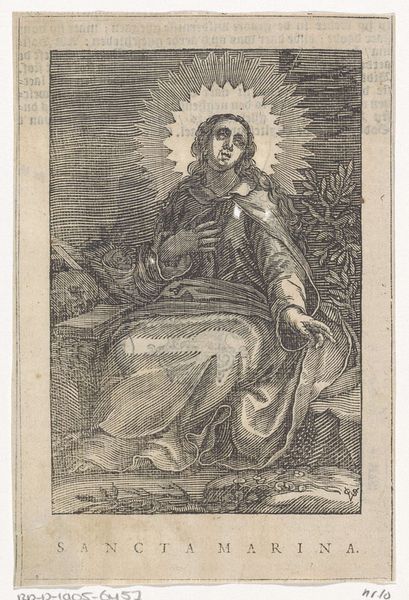
engraving
#
portrait
#
baroque
#
caricature
#
portrait reference
#
pencil drawing
#
portrait drawing
#
history-painting
#
engraving
Dimensions: height 500 mm, width 406 mm
Copyright: Rijks Museum: Open Domain
Editor: So, this is "Johannes de Evangelist," an engraving by Mattheus Borrekens, created sometime between 1625 and 1670. The dramatic lighting and raised hands give it a very theatrical, almost pleading quality. What do you make of it? Curator: It's intriguing how Borrekens positions John the Evangelist, literally bathed in divine light. Consider the era: the Counter-Reformation. How might this image function as a form of religious propaganda, reinforcing ideals about saints during a period of intense doctrinal conflict? Think about the deliberate staging, the upward gaze... Editor: A tool for ideological persuasion, almost? The theatricality makes sense in that light. But is it effective? Curator: Precisely. But effective for whom? Who was the target audience? And whose gaze are we invited to adopt? Perhaps it's designed to elicit a particular emotional response from the viewer, a sense of awe and submission to religious authority. What power dynamics are at play? Editor: It's interesting to think about the intended audience shaping the artistic choices. I initially just saw religious devotion, but now I am thinking more critically about how Borrekens positions the viewer. Curator: Exactly! Art never exists in a vacuum. This piece offers a lens to examine not just religious history, but the way power and faith intertwine, shaping cultural narratives even today. I am leaving with more questions about faith than when we started. Editor: Me too! Looking at it with these questions in mind makes this so much more than just a historical engraving.
Comments
No comments
Be the first to comment and join the conversation on the ultimate creative platform.


